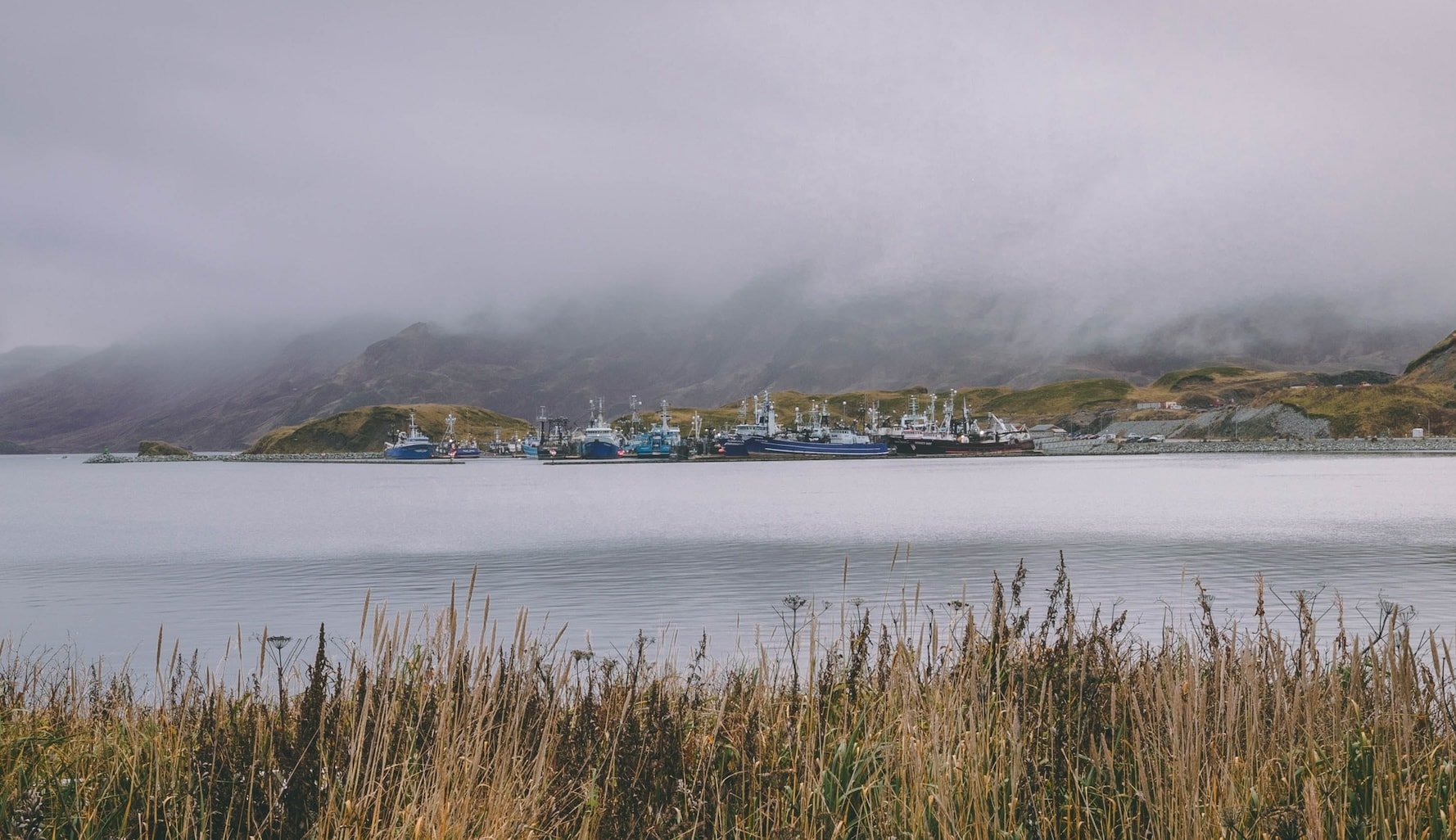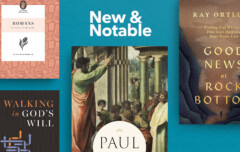Last week I spent an unexpectedly long time in small-town Alaska—in a town that revolves around commercial fishing. If you’ve seen shows like Deadliest Catch, you’ve seen Amaknak Island which forms part of the sprawling Aleutian chain. You’ve seen the town of Unalaska and its harbor, Dutch Harbor. You’ve seen the fleet that heads into the dangerous Bering Sea to fish for crab. You’ve seen the outsized characters who captain these boats and who man them.
We had the interesting experience of spending a couple of afternoons on one of these boats to see how crab is hauled up from the depths (and, later, how it is cleaned, cut, cooked, and devoured). The owners of the boat, a delightful Christian couple, were eager to show us their trade and to answer all of our questions. On Sunday we worshipped with their church as part of our Worship Round the World project. On Monday morning we prepared to head home. And then everything started to get strange.
As morning broke we saw that a deep, low fog had settled in and we learned that every flight to the mainland had been canceled. No ferries run this time of year and there is no other way off the island except to fly, so we would need to wait it out. The fog remained on Tuesday and flights were canceled again. On Wednesday a volcano that had erupted in Russia blew volcanic ash east over the Aleutians and flights were grounded for that reason. On Thursday a volcano in western Alaska erupted and spewed ash west over the Aleutians, once again grounding flights. How the same wind can blow ash both east and west I’ll never know! On Friday the bad weather returned, until finally Saturday was clear enough that planes could once again come and go.
The entire time we were in Unalaska we were the glad recipients of the very highest of Christian hospitality. We were well cared for and never lacked for anything. We had access to a beautiful house with stunning views out over Captain’s Bay. When the weather cooperated we drove around the island, enjoying and admiring its stark beauty. Yet even while we were content enough, we did spend a good bit of time praying that the weather would clear, that the volcanos would stop, and that we would be able to return to our own place and our own people. This was to be the final journey of many this year and we were all ready to be home.
In that nautical environment, I found myself thinking about an old illustration related to prayer in general and to Hebrews 4:16 in particular: “Let us then with confidence draw near to the throne of grace, that we may receive mercy and find grace to help in time of need.” A theologian pondered how we can draw near to the throne of grace and what role prayer plays in this. He thought of a boat that was attached to the shore with a long rope. Once that boat was far out into the sea, the crew began to pull on the line. As the distance closed between land and boat, the sailors might have been tempted to think that they were drawing the land toward themselves. But, of course, the land did not move one inch. Rather, it was the boat that moved as it was steadily pulled toward the land.
And just like that, we are to attach our desires to God’s throne with prayer. We and our desires are the boat and prayer is the rope. And as we pull on the rope, which is to say, as we pray, we do not expect to move the throne toward ourselves. Rather, we expect that we will be drawn closer to the throne. We will not compel God to become more like us—our desires will not overwhelm God’s and our will will not supersede his. Rather, as we draw near, we will become more like him—our desires will become submitted to his and our will will yield to his. We will find ourselves in harmony with God and delight ourselves in his answer to our prayer, no matter what it is.
As we draw closer to God through prayer, as we come into closer conformity to God through earnest prayer, we will find ourselves satisfied with plenty or want, joy or sorrow, peace or turmoil. We will desire for ourselves what God desires for us. We will be at harmony with his will, at harmony with his purposes, and at harmony with his providence. We will have drawn near to his throne—we will have drawn near to him—and we will be content.










